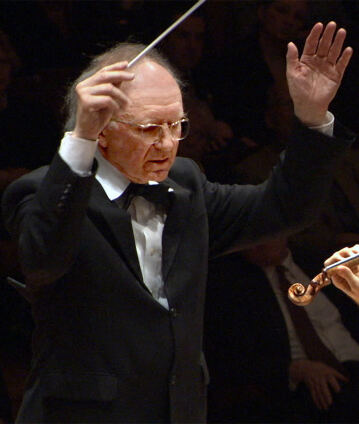Heinz Holliger conducts Schumann and Zimmermann

Heinz Holliger can look back on an impressive career not only as an oboist and composer but also as a conductor. In this concert, he offers an exciting double portrait of Robert Schumann and Bernd Alois Zimmermann. Both were able to combine innovation and musical exuberance, as Schumann’s Spring Symphony and Zimmermann’s ballet Alagoana demonstrate. Thomas Zehetmair presents two of the composer’s works with solo violin.
When the Berliner Philharmoniker combined Schumann symphonies with works by Bernd Alois Zimmermann on several concert programmes during the 2008/09 season, it was logical that they invite Heinz Holliger. The Swiss composer, oboist and conductor has devoted himself intensively to Schumann’s music since his youth, which has also strongly influenced his own works. Holliger also has a close affinity with Zimmermann.
The programme was structured symmetrically, with a symphonic work and a composition for violin and orchestra by both Schumann and Zimmermann. Schumann’s Violin Fantasy was composed at the same time as his concerto for the same instrument, and after its premiere with Joseph Joachim it enjoyed a certain degree of popularity before disappearing almost entirely from the classical repertoire. One of the composer’s most popular works, on the other hand, is the Spring Symphony from 1841, which, with its opening motto, innovative formal development and the integration of songlike elements, represents a new type of symphony after Beethoven.
Like Schumann, Zimmermann also avoided historical and stylistic categories to a great extent. In his works, we find the influence of popular culture and quotations from music history as well as experiments with twelve-tone music in the tradition of Arnold Schoenberg. His work Alagoana, which was initially composed as ballet music, is characterized by a complex time structure and unusual scoring, with instruments such as vibraphone, guitar, celesta, harpsichord and saxophone quartet. The soloist for the concert was violinist Thomas Zehetmair, who made his debut with the Berliner Philharmoniker in 1985 and is known for both his unconventional interpretations of familiar repertoire and his strong commitment to rarely performed works.
© 2009 Berlin Phil Media GmbH
Related interviews